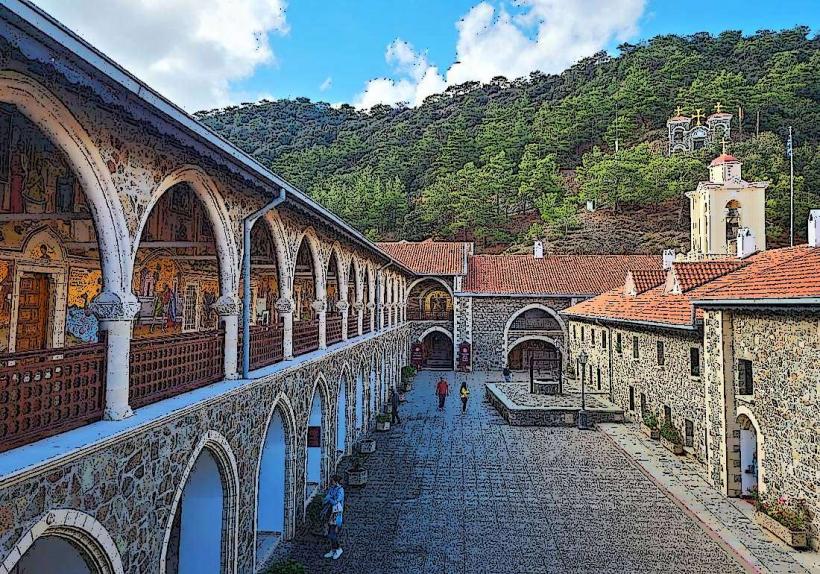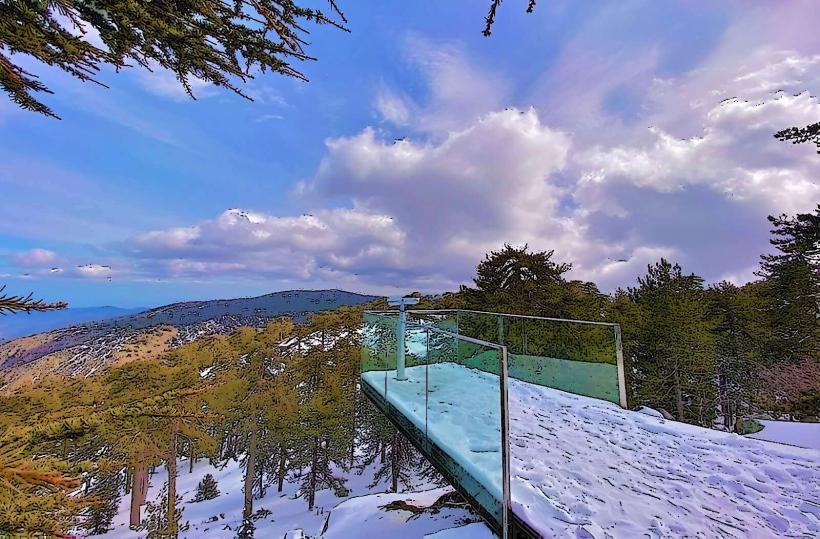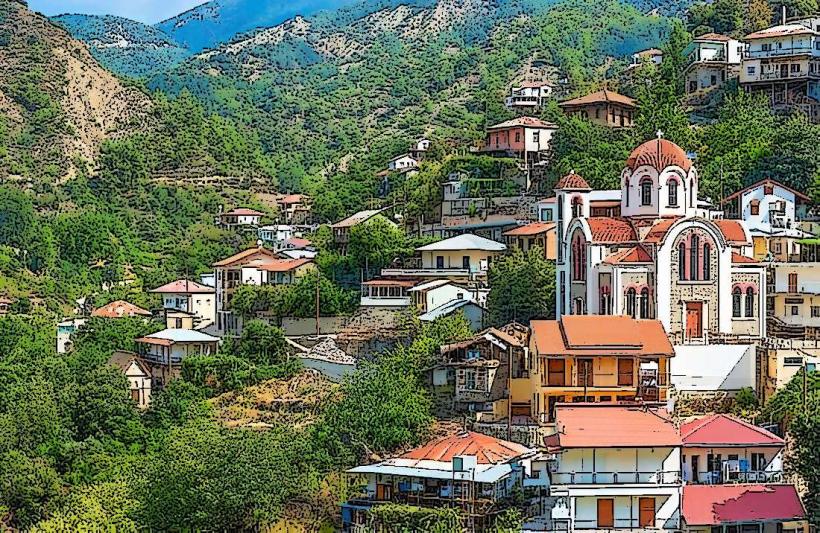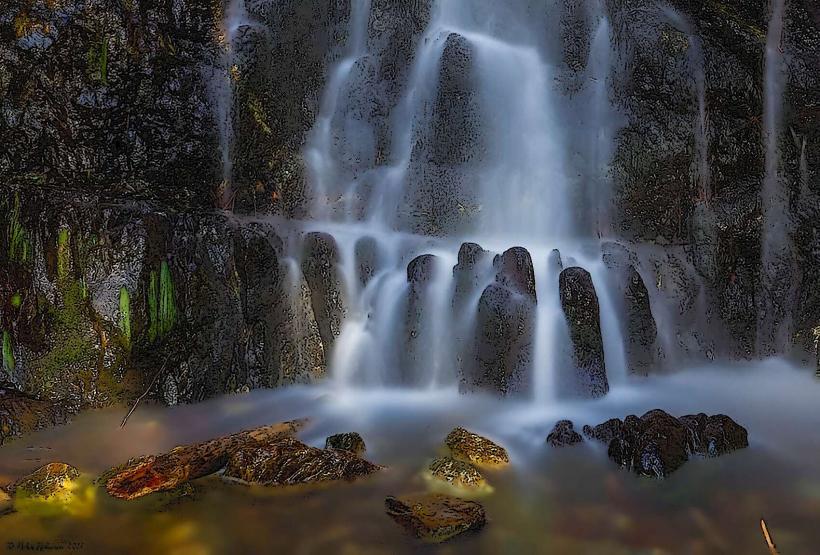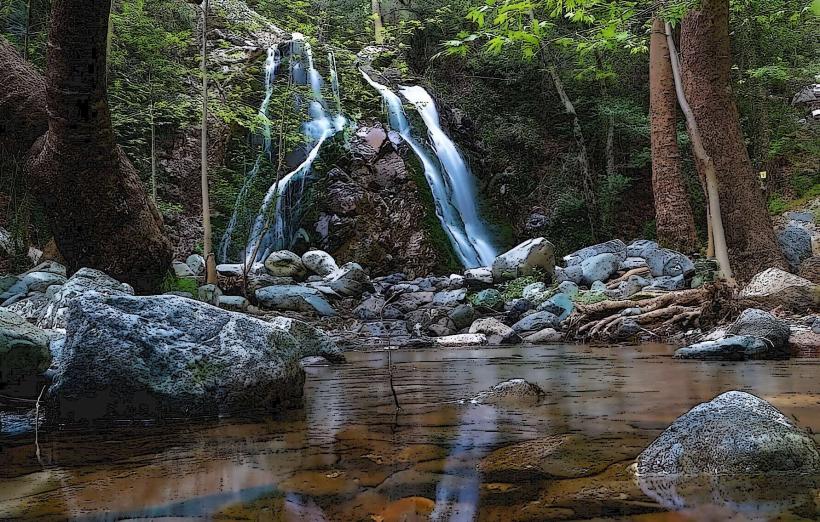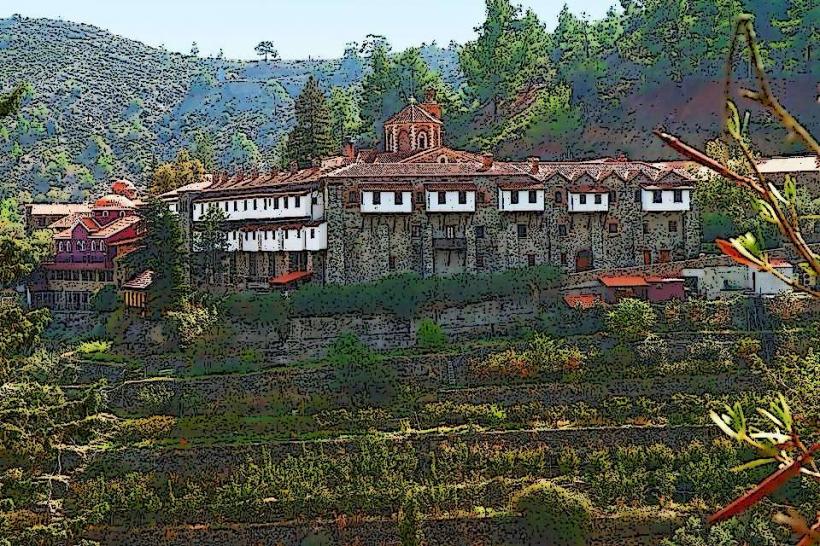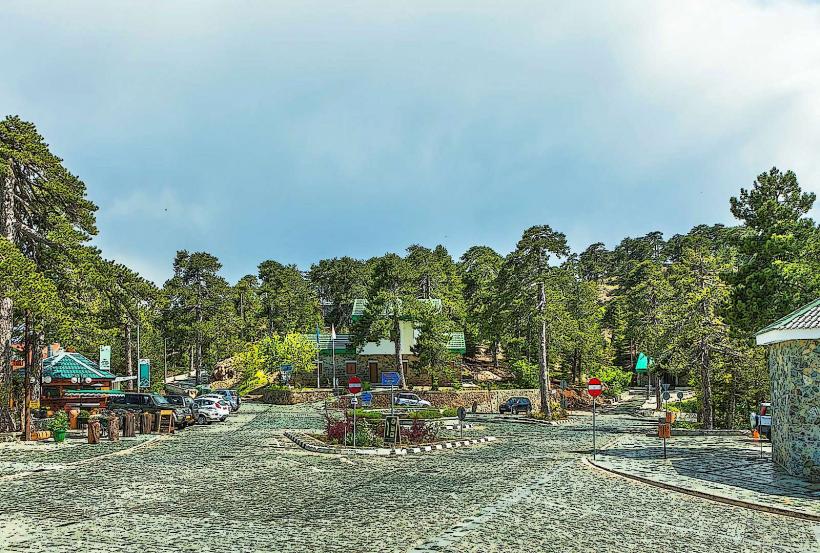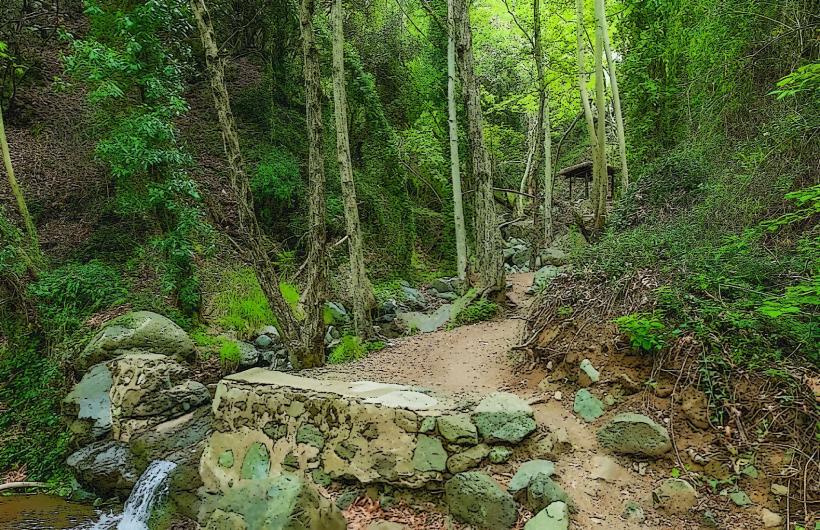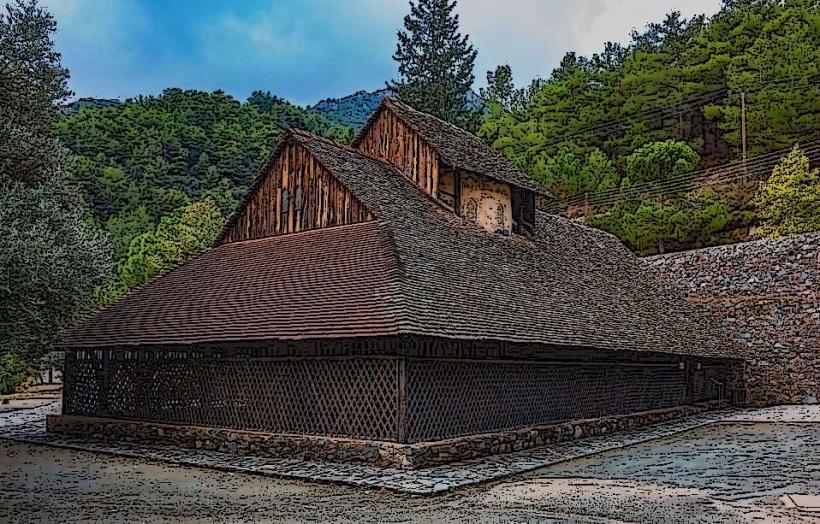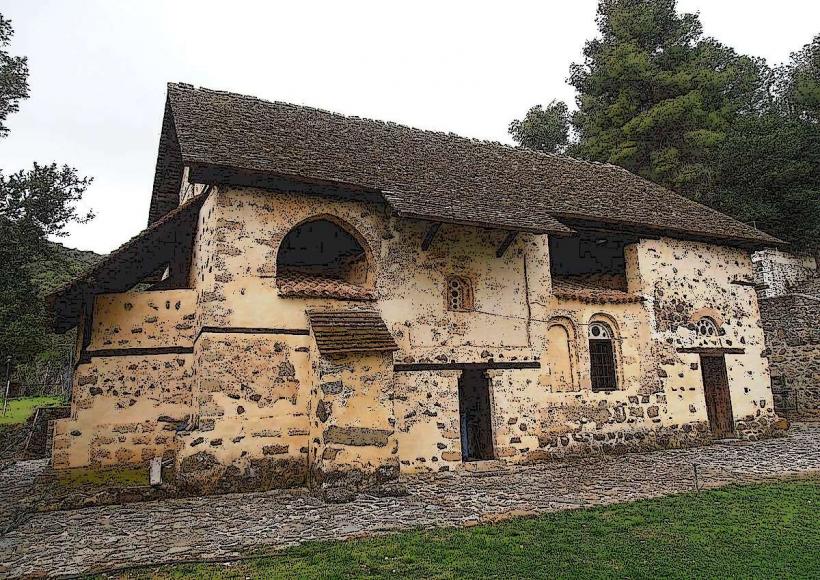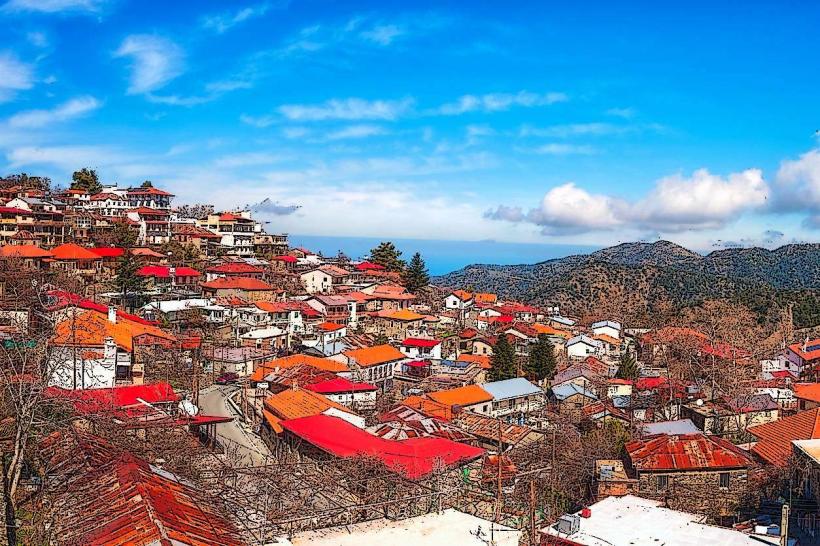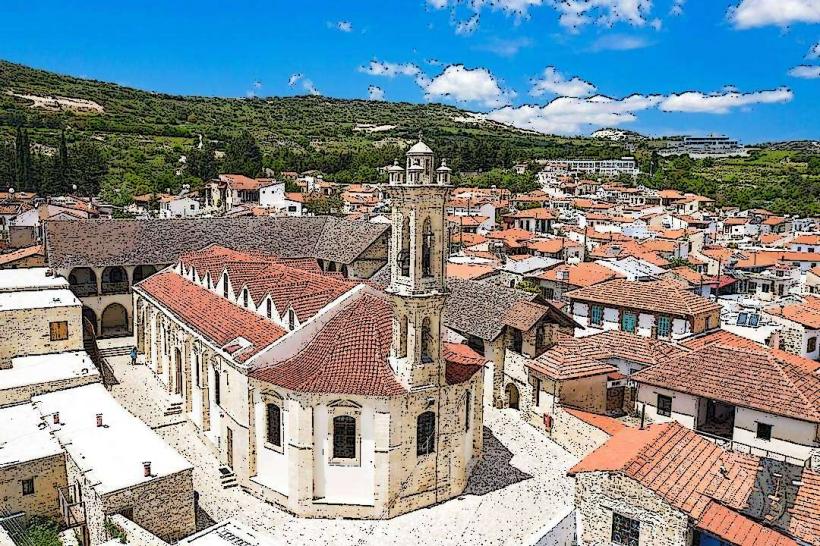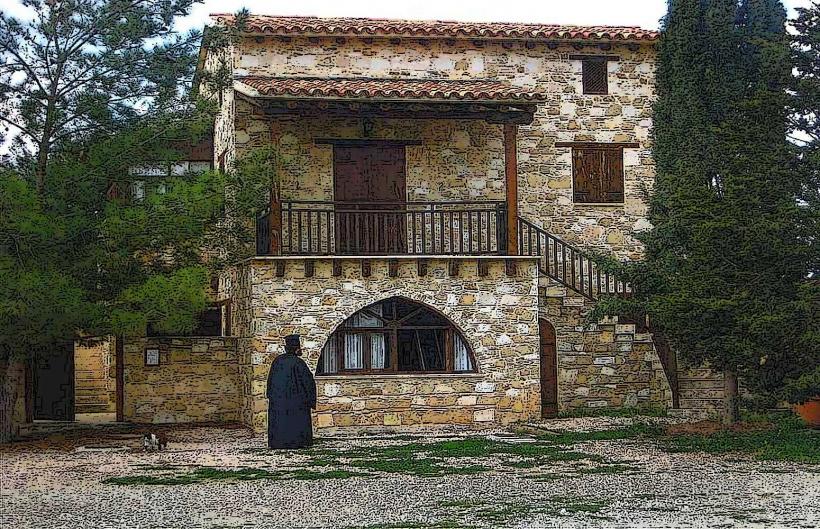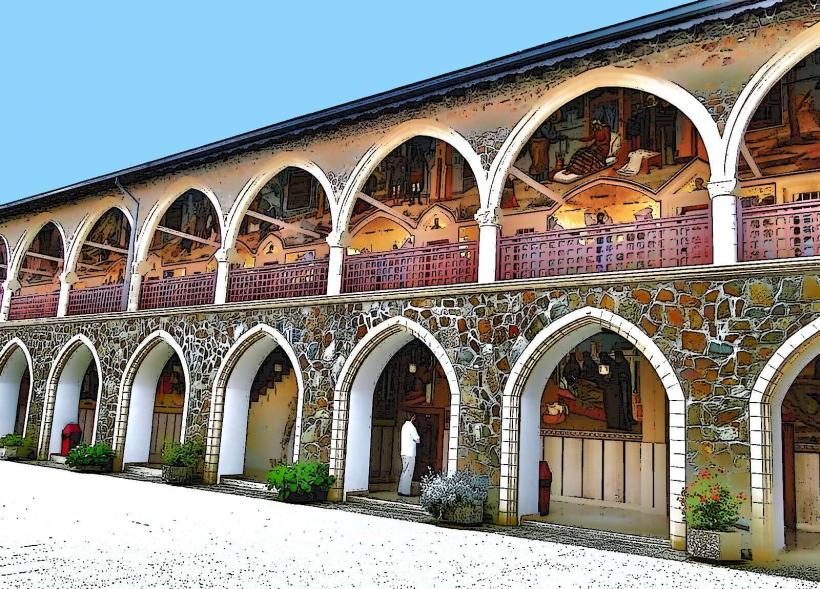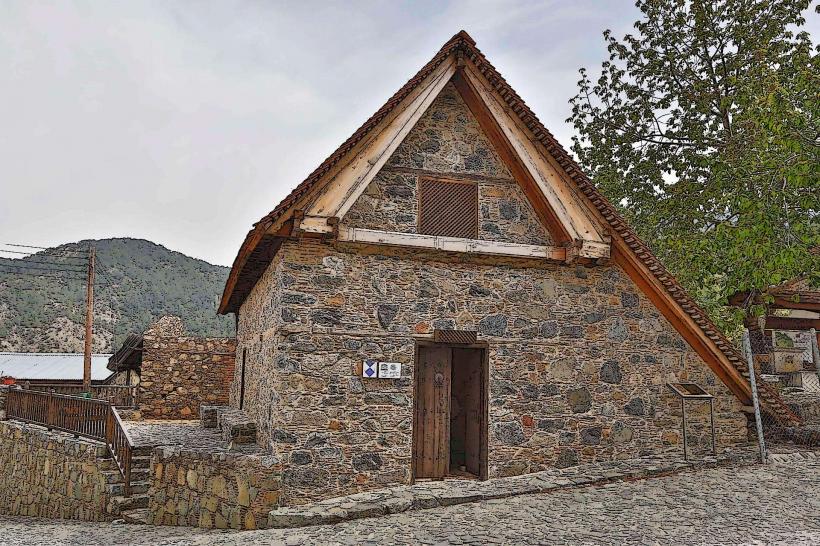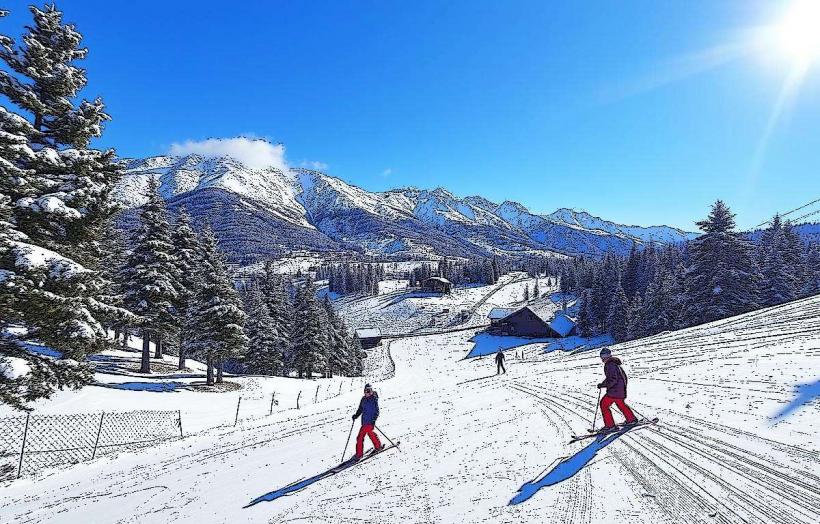Information
Landmark: Stavros tis PsokasCity: Troodos
Country: Cyprus
Continent: Europe
Stavros tis Psokas is a nature reserve and wildlife station located in the Troodos Mountains of Cyprus, renowned for its pristine environment and significant biodiversity. This protected area is part of the larger Troodos National Forest Park and is primarily known for its role in the conservation of the Cyprus mouflon (wild sheep) and other endemic species. Here’s a detailed overview of Stavros tis Psokas:
1. Location and Accessibility
- Location: Stavros tis Psokas is situated in the northwestern part of the Troodos Mountains, within the Pitsilia region, which is part of the Limassol District. It is around 25 kilometers from the village of Platres and approximately 45 kilometers from Limassol.
- Accessibility: The nature reserve is accessible by car via the Troodos-Kyperounta road, which leads to a parking area near the Stavros tis Psokas wildlife station. From the parking area, there are trails that allow visitors to explore the area. Although the reserve is in a mountainous region, it is well-maintained and provides a relatively easy way for visitors to experience Cyprus' natural beauty.
2. Cyprus Mouflon Conservation
- Cyprus Mouflon: The Cyprus mouflon (Ovis orientalis cypriotica) is a species of wild sheep that is native to Cyprus and found in the Troodos Mountains. The species was once widespread across the island, but due to overhunting and habitat loss, it became nearly extinct. Stavros tis Psokas plays a crucial role in the conservation of this endemic species.
- Wildlife Station: Stavros tis Psokas is home to a wildlife station that was established to protect the Cyprus mouflon and ensure its survival. The station provides a safe habitat where the mouflon can roam freely, and it also serves as an educational center for visitors to learn about the species and the ongoing conservation efforts.
- Mouflon Watching: Visitors to Stavros tis Psokas may be lucky enough to spot a Cyprus mouflon in its natural habitat. The reserve provides the perfect setting for wildlife enthusiasts, as the Cyprus mouflon is often seen grazing or roaming in the wild. The wildlife station sometimes offers guided tours to help visitors locate and observe these animals.
3. Flora and Fauna
- Biodiversity: Stavros tis Psokas is a rich and biodiverse area, home to many species of plants and animals that thrive in the mountainous environment. The reserve is part of the Troodos National Forest Park, which is known for its unique flora, including several species of endemic plants that are found nowhere else in the world.
- Bird Watching: The area is a haven for bird watchers, with species such as buzzards, falcons, eagles, and various songbirds frequenting the reserve. Migratory birds also pass through the region, making it an important stopover for bird migration.
- Other Wildlife: In addition to the Cyprus mouflon, Stavros tis Psokas is home to a variety of other wildlife species, including wild boar, foxes, hares, and various reptiles. The reserve’s forests are filled with pine and cedar trees, creating an ideal environment for a wide range of animals.
- Endemic Plant Species: The reserve is rich in endemic plant species, many of which are adapted to the mountainous climate. The area is home to rare orchids, wildflowers, and other flora that contribute to the ecological diversity of the region.
4. Hiking and Trails
- Hiking Trails: Stavros tis Psokas offers several hiking trails that allow visitors to explore the natural beauty of the reserve. These trails are well-marked and cater to various levels of hikers, from easy walks to more challenging routes. Some of the trails lead to scenic viewpoints that offer panoramic views of the surrounding mountains and valleys.
- Wildlife Viewing: Along the hiking trails, visitors may have the opportunity to spot wildlife, especially if they are quiet and patient. The Cyprus mouflon is often seen in the early mornings or late afternoons, grazing in the meadows or resting in the forests.
- Educational Signage: The hiking trails are also equipped with informational signs that provide details about the flora, fauna, and conservation efforts in the area. These signs enhance the visitor experience by educating them about the ecological importance of Stavros tis Psokas.
5. The Stavros tis Psokas Wildlife Station
- Visitor Center: The Stavros tis Psokas Wildlife Station includes a visitor center where guests can learn about the reserve's history, the Cyprus mouflon conservation program, and the unique environment of the Troodos Mountains. The center often has exhibits about the wildlife and plants of the region, as well as photographs of the animals in the wild.
- Conservation Programs: The station also runs educational programs and initiatives aimed at raising awareness of environmental conservation. These programs often include talks and presentations about the Cyprus mouflon, wildlife protection, and the broader efforts to preserve Cyprus' natural heritage.
- Guided Tours: For those interested in a more in-depth experience, the wildlife station offers guided tours, where experts explain the significance of the wildlife, flora, and ongoing conservation efforts. These tours provide an excellent opportunity for visitors to gain a deeper understanding of the reserve's ecological importance.
6. Flora and Fauna of Stavros tis Psokas
- Flora: The area is characterized by forests of pine, juniper, and cedar trees, along with a variety of wildflowers and shrubs. The cool, moist climate in the Troodos Mountains supports a diverse range of plant life, including several species of endemic orchids and wild herbs.
- Fauna: The Cyprus mouflon is the star attraction of Stavros tis Psokas, but the reserve also provides a home for many other species. Birds of prey, such as buzzards and eagles, are commonly seen soaring above the mountains, while smaller birds like robins and wrens can be found in the underbrush. Wild boars and foxes are also common inhabitants of the area.
7. Best Time to Visit
- Spring and Autumn: The best times to visit Stavros tis Psokas are during spring (April to June) and autumn (September to November), when the weather is mild, and the flora is at its most vibrant. Spring is particularly beautiful, with wildflowers in full bloom and the mountain landscapes at their greenest.
- Winter: Winter can be cold in the Troodos Mountains, with occasional snowfalls. However, this season offers a quieter, more peaceful experience, and it’s an ideal time for those who enjoy winter wildlife viewing and serene mountain landscapes.
8. Accommodation and Amenities
- Nearby Accommodation: While there is no direct accommodation at Stavros tis Psokas, there are several guesthouses, hotels, and lodges in nearby villages such as Platres and Kyperounta, which offer comfortable places to stay. These locations also provide easy access to the reserve.
- Picnic Areas: Stavros tis Psokas has designated picnic areas where visitors can enjoy a meal surrounded by nature. These spots offer a peaceful setting for a break during or after a hike, with some areas offering scenic views of the mountains.
9. Conclusion
Stavros tis Psokas is a hidden natural gem that showcases the ecological wealth of the Troodos Mountains and plays a key role in preserving the Cyprus mouflon and other endemic species. Whether you're a nature lover, wildlife enthusiast, or someone seeking a peaceful retreat in Cyprus’ rugged mountains, this reserve offers a unique opportunity to explore the island's rich biodiversity. Its hiking trails, wildlife station, and conservation programs make it an ideal destination for those looking to connect with the natural world while learning about Cyprus' efforts to protect its unique wildlife.

